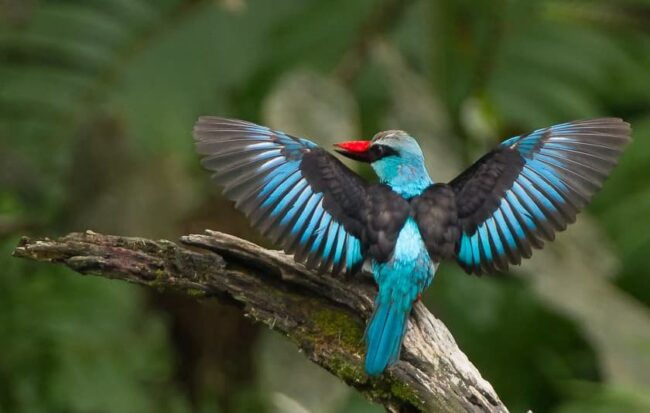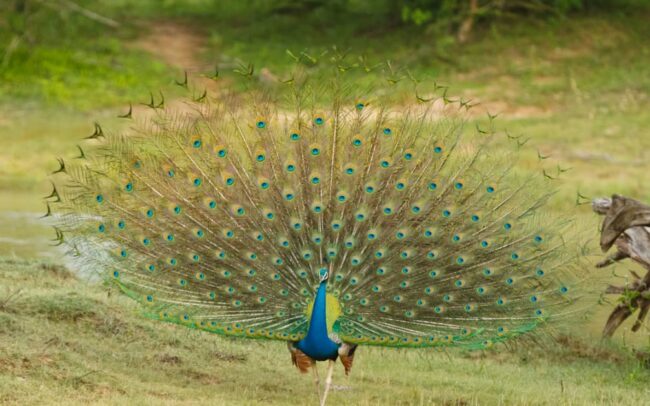Welcome to our blog post dedicated to the captivating Red-Throated Twinspot (Hypargos niveoguttatus). Join us as we explore the world of this stunning bird species, renowned for its vibrant colors, intricate plumage, and elusive nature. Discover the remarkable characteristics and fascinating behaviors that make the Red-Throated Twinspot a true gem of African avifauna.
Field Identification
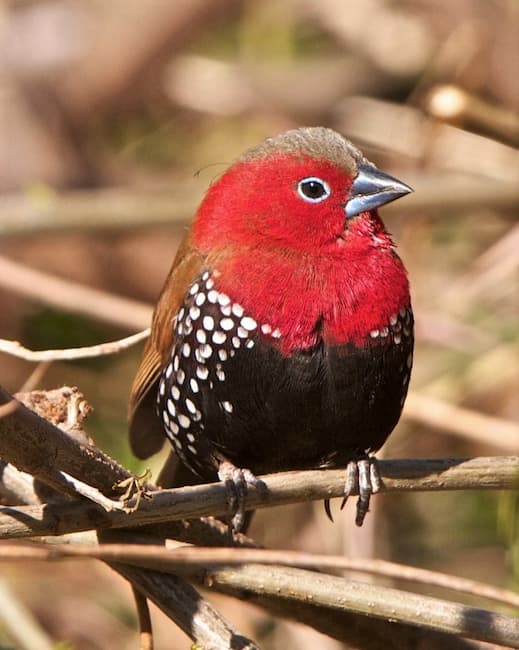
The Red-Throated Twinspot, scientifically known as Hypargos niveoguttatus, is a small passerine bird characterized by its distinctive plumage. The male displays a rich combination of red, black, and white, with a deep red throat and upper breast. The female has a more subdued appearance, featuring warm brown tones with subtle streaks.
Systematics History
The Red-Throated Twinspot belongs to the family Estrildidae, also known as waxbills or grass finches. Within this family, it falls under the genus Hypargos, which includes other colorful twinspot species.
Distribution
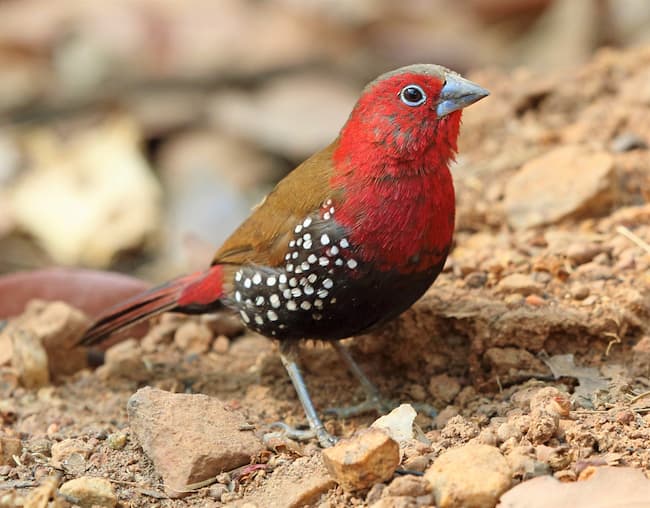
The Red-Throated Twinspot is native to sub-Saharan Africa, specifically found in regions of Angola, Botswana, Mozambique, Namibia, South Africa, Tanzania, and Zimbabwe. Its distribution is mainly concentrated in woodland habitats and savannas.
Habitat
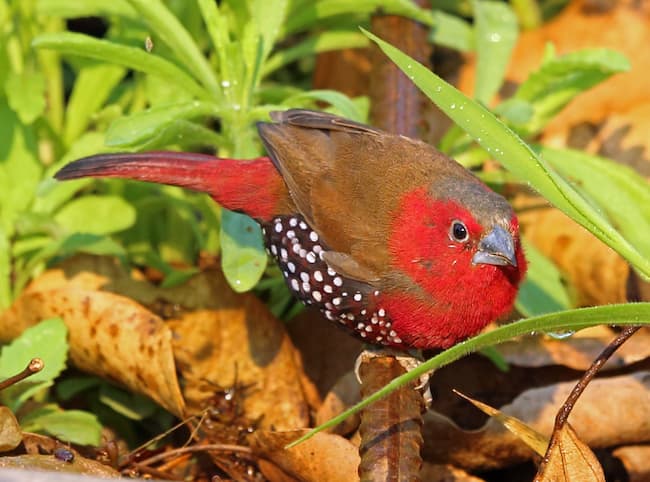
This species prefers dense shrubbery, grasslands, and open woodlands as its primary habitat. It can be found in both dry and moist environments, with a preference for areas that provide a mix of cover and open spaces.
Movement
Red-Throated Twinspots are generally non-migratory birds. However, they may undergo local movements within their range in response to seasonal variations in food availability and breeding requirements.
Diet and Foraging
The diet of the Red-Throated Twinspot consists of a variety of seeds, grasses, insects, and small fruits. They are primarily seed eaters but also supplement their diet with insects during the breeding season.
Sounds and Vocal Behavior
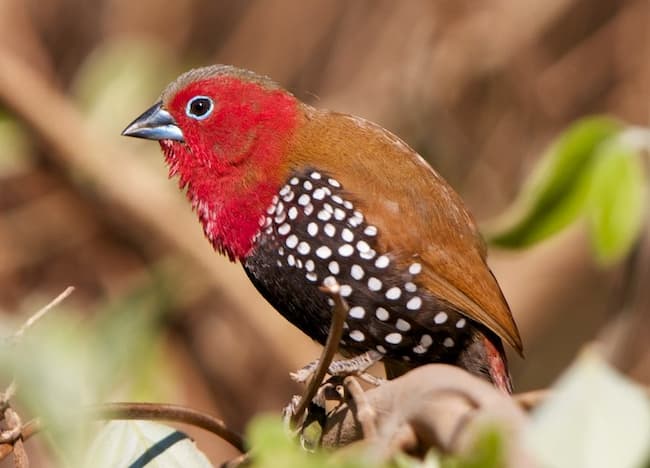
The Red-Throated Twinspot is known for its melodious and distinct vocalizations. The male utters a series of short, flute-like whistles and trills, often during courtship displays and territorial defense. The female’s call is softer and shorter.
Breeding Habits
During the breeding season, male Red-Throated Twinspots engage in elaborate courtship displays to attract a mate. They perform fluttering flights, spread their wings, and sing from prominent perches. The female builds a cup-shaped nest concealed within dense vegetation, where she lays a clutch of eggs.
Conservation Status
The Red-Throated Twinspot is currently classified as a species of Least Concern on the IUCN Red List. While specific threats to its populations are not extensively documented, ongoing habitat loss and degradation may pose risks to localized populations.
Frequently Asked Questions (FAQ)
Q1: How can I attract Red-Throated Twinspots to my garden?
A1: To attract Red-Throated Twinspots, create a habitat with dense shrubbery, provide a variety of seeds and fruits, and ensure a water source for bathing and drinking. Patience and providing suitable cover will increase the chances of attracting these elusive birds.
Q2: What is the significance of the red throat in the Red-Throated Twinspot?
A2: The bright red throat of the male Red-Throated Twinspot plays a crucial role in attracting females during courtship displays, signaling his fitness as a potential mate.
Q3: Are Red-Throated Twinspots social birds?
A3: Red-Throated Twinspots are generally seen in pairs or small family groups. While they may associate with other birds during foraging, they are not known for forming large flocks.
Q4: Do Red-Throated Twinspots have any cultural or symbolic significance?
A4: In some African cultures, the Red-Throated Twinspot is considered a symbol of love and monogamy, and its image is used in traditional art and folklore.
Q5: Are Red-Throated Twinspots kept as pets?
A5: It is important to note that keeping wild birds as pets is generally discouraged due to ethical and conservation concerns. Red-Throated Twinspots are best enjoyed in their natural habitat.
The Red-Throated Twinspot enchants bird enthusiasts and nature lovers with its dazzling colors and charming behaviors. By appreciating and understanding these remarkable birds, we can contribute to their conservation and the preservation of the diverse ecosystems they inhabit.
